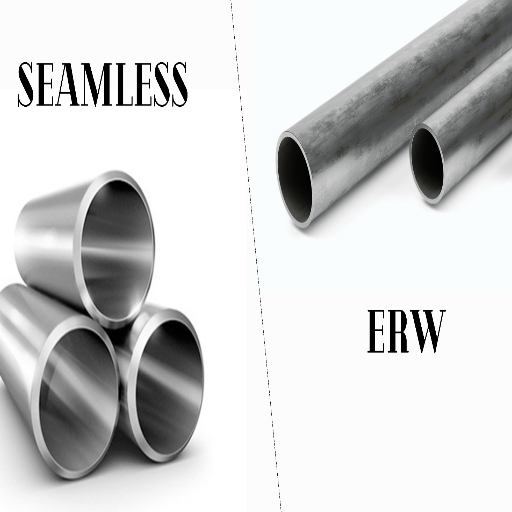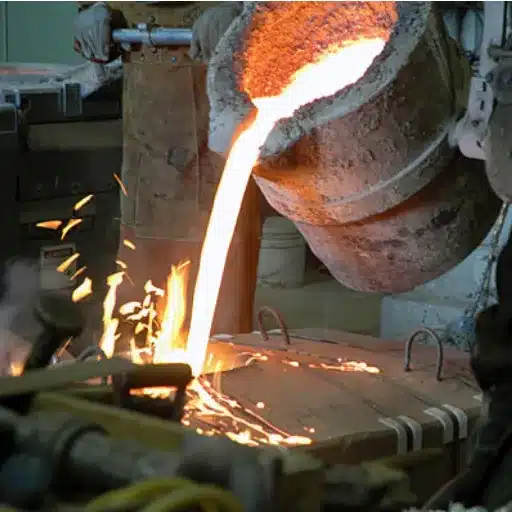Pipes are indispensable components across various industries, serving critical roles in sectors like construction, energy, and manufacturing. Among the many types of pipes, seamless and electric resistance welded (ERW) pipes stand out as key options, each offering distinct characteristics suited to specific applications. Understanding the differences between these two types is essential for making informed decisions in pipeline projects, as factors such as strength, manufacturing processes, and cost implications can significantly affect performance and efficiency. This article will guide you through the key distinctions between seamless and ERW pipes, equipping you with the knowledge necessary to choose the right material for your needs.
What is Seamless Pipe and How is it Made?
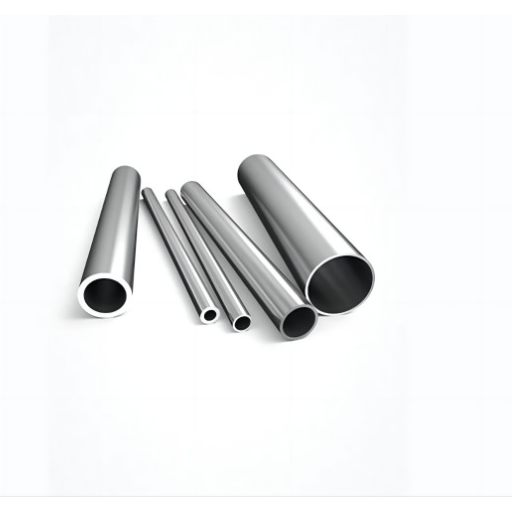
How Seamless Pipe is Made from a Solid Round Steel
The manufacturing of seamless pipes initiates with a methodical and precise process, which begins with a solid round steel billet. The billet serves as the raw material, which is then placed in a furnace where it is heated to a very high temperature. The steel needs muscular heating and has to be put into a malleable substance, but still has to retain its structure. This leads to the assurance that the steel will be able to take the shape needed during further steps of the process.
The heated piece, also known as a billet, needs to be placed into a piercer mill. A piece of machinery designed to pierce objects using rotary piercing techniques. In these techniques an already heated billet will be pierced at the center using a mandrel or a piercing rod. The result leads to a hollow tube formation, which lacks any welded seams, making it more powerful and stronger. The seams are important as they improve the shape while keeping the material intact during times of temperature and pressure.
Post-piercing, the empty tube is stretched and shaped by different rolling techniques. This includes stretch reducing and rotary sizing mills that further refine the pipe to achieve the specified dimensions, wall thickness, and diameter. In addition to cutting and cooling the seamless pipe, a thorough industry-standard quality check is performed during the final step to ensure all regulations are met. Through these processes, the resulting pipe is strong and durable, making it ideal for use in oil and gas pipelines, pressure vessels, and construction projects. Seamless pipes are especially optimal for environments of intense heat and pressure owing to the lack of weld seams.
The Role of Billet in Seamless Pipe Production
Billets are important for the manufacturing process of seamless pipes since they serve as the basic building block that needs to be shaped into a pipe. Traditionally, billets are composed of carbon steel, stainless steel, or alloy steel. These pre-shaped metal blocks contain the strength, uniformity, and composition required to produce high-performance pipes. Seamless pipes undergo rigorous demands like having tensile strength, withstanding high pressures, and remaining reliable throughout their use; hence, the billet has to be of high quality. In most cases, the quality of the billet determines how durable, pressure-resistant, and reliable the seamless pipe is.
The initial step of the production cycle begins with heating the billet until the critical forging temperature is reached. Once this phase is executed the material can easily undergo extruding it, piercing, or both. The hollow cylindrical form of the pipe must be created without any welds to maintain the integrity of the pipe. During the further steps of elongation and diameter adjustment, all of which rely on other steps to be smooth textured in all facets, the preset uniform composition and dimensions of the initial billet become key prerequisites.
The seamless pipe application determines the material selected. For structural or even pipeline requisites, carbon steel would suffice; in cases where high-risk corrosive environments exist, stainless steel is usually added. In all cases, to comply with set rigid industry requirements, ensuring seamless pipes achieve a certain performance level is paramount.
Applications of Seamless Steel in High-Pressure Environments
Seamless steel pipes are essential in high-stress applications due to their exceptional strength, uniform construction, and ability to endure extreme stress. The absence of a welded seam, or ‘seam’ as the name suggests, makes these pipes easier to manufacture. Their seamless construction removes the welded joints, which are a weak point of traditional pipes, making them more ideal for industries that require reliability under pressure. Oil and gas pipelines, power plants, and even hydraulic machines incorporate these pipes due to extreme internal pressure as well as rigorous operational conditions.
The oil and gas sector widely uses seamless steel pipes for the transportation of crude oil, natural gas, and other hydrocarbons over extensive distances. These pipes are resistant to corrosion and operationally secure while under immense pressure. Such pipes are also employed in power plants for boilers, steam lines, and superheated tubing under high-temperature, high-pressure scenarios. Their thermal stability and resistance to changes while under extreme conditions mean that seamless metal pipes are essential in such systems.
Seamless steel pipes are used in aerospace and hydraulic machinery as a means of transmitting pressurized hydraulic fluids. The strong tensile steel, accuracy, and precision of the pipes guard against undetected leakages and safeguard closed high-pressure circuits. In general, the outstanding features of seamless steel make them suitable for use where high pressure is required in various sectors, especially where the elements of safety and strength cannot be compromised.
What is ERW Pipe and How is it Produced?
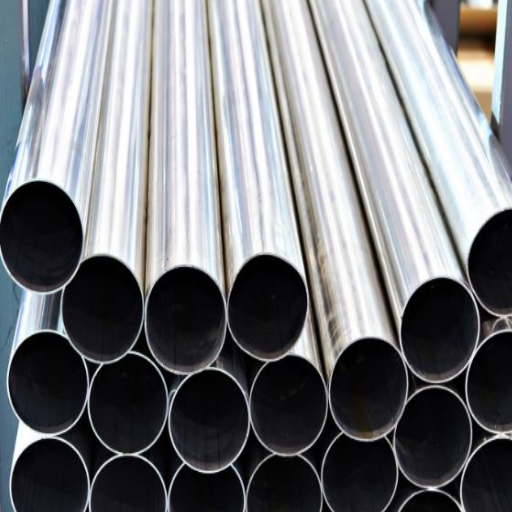
The Importance of Coil in Manufacturing ERW Pipe
The effectiveness and features of the coil material are extremely important in the manufacturing of Electric Resistance Welded (ERW) pipes. Coils are classified as the first level of raw material and their mechanical and chemical properties are of primary importance to the structure, functionality and performance of ERW pipes. Accuracy in the coil technology is necessary to ensure the uniformity of wall thickness, size, and strength of the pipe under operational loads.
For the manufacture of ERW Pipes, High-grade steel coils are used, and due consideration is given to standards like ASTM, API, or ISO. These coils are rigorously evaluated for uniformity in chemical composition, yield strength, tensile strength, and elongation. The Advances in metallurgy, advances in coil rolling, lower impurity levels in the steel, and better crystal structure not only improve the quality of the steel, but also weldability and life of the pipes as well.
With the modern equipment and sensors for coil processing, such major defects as lamination, cracks and inclusions which greatly affect the quality of the pipe become minimal. Defect free monitoring of coils during forming stage also ensure better utilizations of ERW pipes in more demanding and critical applications such as oil and gas construction and automotive industry.
Key Differences in Welded Joint and Seamless Pipe
Welded pipes are pegged as being cost-efficient and suitable for applications exhibiting low to medium levels of pressure, while seamless pipes have integral strength, pressure, and corrosion resistance owing to a homogeneous internal structure.
|
Attribute |
Seamless Pipe |
Welded Pipe |
|---|---|---|
|
Durability |
High |
Moderate |
|
Pressure Tolerance |
High |
Low-Medium |
|
Rust Resistance |
Strong |
Weak |
|
Expense |
High |
Low |
|
Dimension Range |
Limited |
Broad |
|
Wall Consistency |
Variable |
Uniform |
|
Usage |
Specialized |
General |
|
Production |
Complex |
Simple |
Comparing the Differences Between Seamless and ERW Pipes
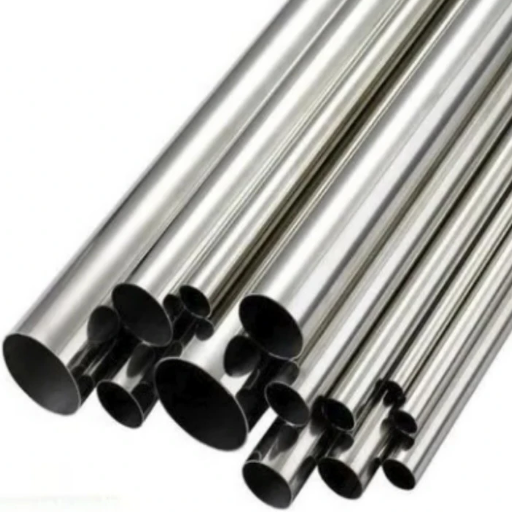
Cost Considerations: Seamless vs ERW Pipe
The higher quality and complex manufacturing process of seamless pipes make them more expensive compared to ERW pipes. The latter uses simpler production methods which provide the pipes at lower costs.
|
Attribute |
Seamless Pipe |
ERW Pipe |
|---|---|---|
|
Cost |
High |
Low |
|
Process |
Complex |
Simple |
|
Strength |
High |
Moderate |
|
Pressure |
High |
Moderate |
|
Temperature |
High |
Low |
|
Applications |
Specialized |
General |
|
Uniformity |
Consistent |
Welded seam |
Performance in High-Pressure Applications
In my experience with high-pressure applications, I prefer using seamless pipes because they tend to fail less and have greater structural integrity for seamless pipes are manufactured without any welded seams, guaranteeing consistency throughout. It makes them perfect for maintaining high pressure and stability. Such pipes do not bow under great stress.
For moderate pressure requirements, ERW (Electric Resistance Welded) pipes have proven to be effective and cost-friendly. Still, they lack the dependability needed in high-pressure conditions. The welded seam poses a weak link that may not withstand great pressures. Even though some advancements in welding technologies increase the strength of the seams, there is still no competition to the structural strength of seamless pipes when it comes to critical high-pressure applications.
In conclusion, the most suitable pipe of choice would depend on the specific job requirements. For moderately set operating pressures with cost efficiency in mind, ERW pipes are an appealing solution. But my recommendation would go to seamless pipes when dealing with safety-critical systems meant to endure high pressure, as they tend to perform far better. Their unmatched strength, sturdiness, and dependability in demanding conditions make the choice obvious.
Why Choose Seamless and ERW Stainless Steel Pipes?
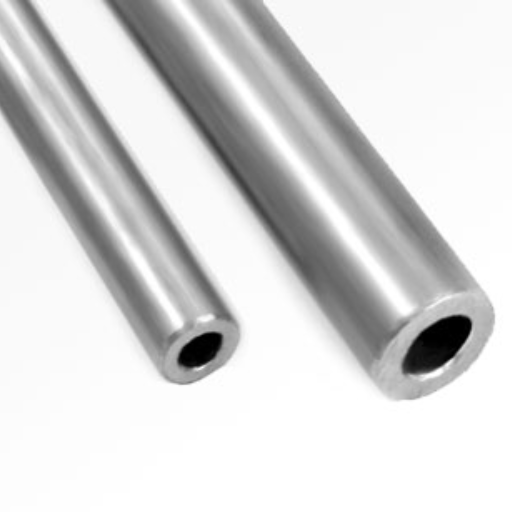
Advantages of Stainless Steel Pipe in Corrosive Environments
The distinctive structural and chemical properties of stainless steel make it indestructible. Its pipes can withstand extremely corrosive environments, unlike any other material, without suffering damage from winds. Below are five key advantages:
- High Corrosion Resistance: We know chromic oxide could be a hindrance to stainless steel, but shielding in rudimentary and moderate situations would improve safety. B-grade pipes also act like this. 316 and 316L accept protruding pitting fractures and corrosion sullies passed in seawater or industrialized chemical processing regions.
- Durability and Longevity: The stainless oxidises at a slow rate making it worthy. Being prone to perforations and corrosion makes the need for replacing machinery almost non existent. Proper maintenance can easily extend the lifespan to over 50 years.
- Low Maintenance Requirements: Stainless steel does corrode, which results in alloys degrading over time. However, clean oil and grease will mitigate any additional machining, which helps save on oil and gas industry. Also, remove pipe fractures for marine operations.
- Withstanding High Temperatures and Pressures: The structure of stainless steel pipes does not change under extreme temperature and pressure, meaning they remain reliable and sturdy. In fact, some grades like 304 and 321 have shown extraordinary endurance to temperatures as high as 800°C, making them particularly useful in boilers and heat exchangers.
- Hygienic and Eco-Friendly Properties: Because of the smooth inner surfaces of stainless steel pipes, bio-film residue is less likely to form, making them ideal for use in the food and pharmaceuticals sector. Furthermore, stainless steel can be recycled in its entirety, reflecting contemporary eco-friendly and sustainable efforts.
These benefits highlight why stainless steel pipes are essential in the construction of metal frameworks in plant systems that require exceptionally high levels of corrosion resistance as well as dependability under severe conditions.
The Use of Seamless and Welded Pipes in the Industry
Due to their distinct characteristics and performance parameters, seamless and welded pipes are useful in many industries. Unlike welded pipes, seamless pipes have no flaws. Each type has its unique method of construction, which determines the performance toward application, strength, and durability. There are five key points to remember regarding their application and use in the industry:
- Oil And Gas Industry: Seamless pipes can be used to transport oil, gas, and other fluids at extremely high temperatures and pressures. Since seamless pipes do not develop any flaws under extreme conditions, they are perfect for offshore drilling equipment and pipelines. Welded pipes also serve a purpose in the lower-pressure oil and gas applications conveyance systems.
- Power Generation: Due to their pressure-resistant properties, seamless pipes are a good choice for boilers, heat exchangers, and superheaters in power plants. In other low-pressure applications, such as cooling water systems, cost-effective welded pipes are the go-to choice.
- Chemical and Petrochemical Processing: Stainless steel seamless pipes are perfect for the chemical and petrochemical industries due to their high resistance toward chemicals. For chemical plants which do not require high Precision, welded pipes are the ideal choice especially as the diameter increases.
- Construction and Infrastructure: Welded pipes are particularly useful in structural scaffolding, building frameworks, and columns because they are cost-efficient and can be easily made in different dimensions. For several bearing structures, uniformity and high strength is critical; for these, seamless pipes are better suited.
- Automotive and Aerospace Industries: In the automotive and aerospace industries, seamless pipes are integral because there is a need for precision, reliability, and great ability to endure stress. These are applied in numerous systems, such as hydraulics, fuel injection, and mechanical cylinders. Seamless pipes are crucial in these industries because of safety and performance concerns. Welded pipes may be used in these industries for non-structural pieces, even though they are less common.
Each pipe type is selected to suit individual operational costs and efficiency needs to work with industrial productivity requirements. Understanding the characteristics of seamless and welded pipes allows industries to make decisions specific to their applications.
Exploring the Difference Between Seamless and Welded Pipes
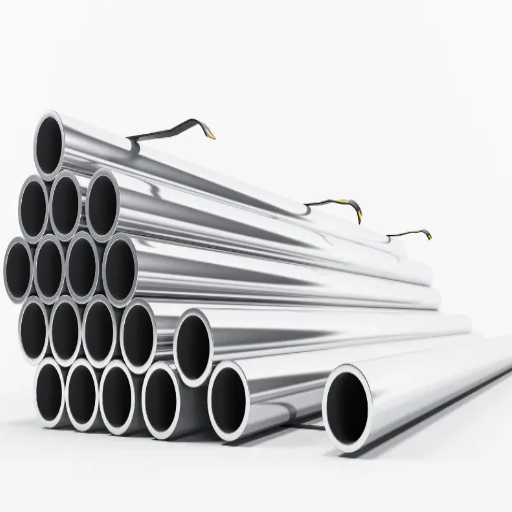
When to Use Seamless Tube Over Welded Pipe
The choice between using seamless tubes or welded pipes relies on the application’s operational requirements, safety factors, and environmental factors. Due to its inherent structure, mechanical attributes, and resilience against high temperatures, pressure, and corrosive environments, seamless tubes are preferred in the oil and gas industry, power generation, aerospace, and chemical processing.
Seamless tubes are beneficial in applications with high internal pressure. These tubes are much stronger because eliminations of welded seams open lessened possibilities for fractures and weaknesses. Because of this, these tubes are used in boilers, heat exchangers, and superheater tubes. In addition, seamless tubes are produced with higher surface finishes which increases reliability and performance in dynamic systems and hydraulic and instrumentation systems.
Seamless tubes can also bear more challenging processes, including bending, flaring, and machining, with greater ease while maintaining structural integrity. This characteristic enables the seamless tubes to industries that need affixed tube measurements or customized shapes. In comparison to welded pipes, seamless tubes do tend to have heightened material and manufacturing expenses. However, the longevity and reliability of these tubes, especially in critical engineering endeavors, can make the expense justifiable in the long run.
Seamless tubes are preferred over welded pipes in scenarios where operational dependability, versatile strength, and adaptability are given priority over budget constraints. The ability of these tubes to endure difficult surroundings solidifies their place as a vital part of the most advanced technologically demanding industries. Engineers need to evaluate the specific aspects of an application and decide if the seamless tube is indeed the most effective solution.
Understanding the Welded Steel Pipe Limitations
Welded steel pipes are used across various industries, but they do come with certain limitations that can impact their efficiency and lifespan in severe conditions. The most significant concern is the weld seam, which is a meshed joint because it is always the weakest point in the structure. This particular point is a mechanical failure when iso multi-stressed, stressed, or previewed under corrosive conditions. Furthermore, wall uniformity is frequently lower in welded pipes as compared to seamless tubes, leading to performance inconsistency over the length of the pipe.
Corrosion resistance is another important con, as the weld zone is more vulnerable to environmental damage because of microstructural changes caused during welding. These changes may lead to the fuselage area becoming weaker, especially when inappropriate standards are proposed for the weld treatment. Adding to this, the process of manufacturing welded pipes creates a risk of including impurities or defects in the weld, which damage long-term dependability.
Looking at welded pipes from dimension angle range, there are limits with regards of diameter and wall thickness variation. Certain extreme heat or pressure applications may require bespoke setting which pose problems for welded manufacturing techniques as there will be loss of material strength.
In any case, the choice of welded steel pipes should be made with these constraints in mind. Engineers, with their boundless skill set, can determine if welded pipes are the ideal option or if proprietary pipes would serve the application better by factoring in the operational needs, environmental difficulties, and the expectations of long-term performance.
Evaluating Seamless Steel Pipe Benefits
The use of seamless steel pipes is very beneficial due to their distinct advantages that come from the manufacturing process. The process of extrusion and elongation instead of welding makes seamless steel pipes stronger. The absence of weld seams diminishes the possibility of lower structural strength due to weak points forming during high-pressure and high-temperature applications. These steels are widely used in industries such as oil & gas, chemical processing, and power generation, where reliability is necessary.
Seamless pipes are proficient at enduring mechanical stress and corrosion because of lack of homogeneous composition as well as absence of failure zones. Current industry analysis suggests that in comparison to welded pipes, seamless pipes bear greater amounts of pressure. Ranging up to 20% more depending on grade and dimension specifics of the pipes. Seamless pipes also can accommodate complex bending and be used in intricate pipeline systems.
The latest developments in seamless pipe production now provide as precise resolution surface finishes. Enhanced precision factors contribute to streamlining Installation, maintenance costs, and longevity. While assessing seamless steel pipes, material grade, pipe diameter, and application-specific requirements need to be considered for enduring effortless pipe functionality.
References
-
The Susceptibility of Electric Resistance Welded Line Pipe to Selective Seam Weld Corrosion
OhioLINK ETD Center – This study explores the corrosion susceptibility of ERW seam welds, providing insights into material behavior and differences. -
API X 70 Grade HR Coils for ERW Pipes
Academia.edu – This paper discusses the mechanical properties and performance of ERW pipes, offering a detailed comparison. -
CiteSeerX – This document highlights specifications and differences in pipe manufacturing processes, including ERW and seamless pipes.
Frequently Asked Questions (FAQ)
Q: What is the primary difference between seamless and ERW pipes?
A: The primary difference between ERW and seamless pipes is that seamless pipes are made by extruding the metal to the desired length and have no welding or joints, while ERW (electric resistance welded) pipes are manufactured from a steel strip that is cold formed and welded longitudinally using an electric current, therefore ERW pipe does include a seam.
Q: How are ERW pipes manufactured?
A: ERW pipes are manufactured by cold forming a ribbon of steel into a cylindrical shape and then passing it through a series of rollers. An electric current is applied to the edges of the steel strip, which are then welded together to form the pipe.
Q: What are the applications of seamless pipes?
A: Seamless pipes are mainly used in applications requiring high strength and durability, such as in gas transportation, the automobile industry, and high-pressure environments, where the absence of a seam is desired when its tolerances aren’t exceeded.
Q: Why is the precise thickness of steel sheets important in ERW pipe production?
A: The precise thickness of steel sheets is essential in ERW pipe production to ensure the dimensional accuracy and structural integrity of the pipe. It helps maintain the tolerances and prevents defects in the final product.
Q: What critique of seamless piping is often discussed?
A: A common critique of seamless piping is that while it offers higher strength and durability, it can be more expensive and complex to produce compared to ERW pipes, which can be manufactured efficiently in desired lengths.
Q: How does the ERW process ensure the strength of the pipe?
A: The ERW process ensures the strength of the pipe by using an electric current to heat the edges of the steel strip, which are then pressed together under a roller to create a strong, longitudinal seam.
Q: Can ERW pipes be used for high-pressure applications?
A: ERW pipes are generally used for medium-pressure applications. For high-pressure environments, seamless pipes are preferred due to their lack of seams and joints, which provide greater strength and reliability.
Q: What role does a mandrel play in pipe manufacturing?
A: In seamless pipe manufacturing, a mandrel is used to help achieve the desired cross-section by supporting the pipe internally while it is being extruded or formed. This helps in maintaining uniform thickness and roundness.
Q: What is an A53 pipe, and how does it relate to ERW and seamless pipes?
A: A53 pipe is a specification for carbon steel pipe that can be either seamless or welded. It is commonly used for low-pressure applications, and both ERW and seamless pipes can be produced to meet A53 specifications, depending on the requirements of the application.

